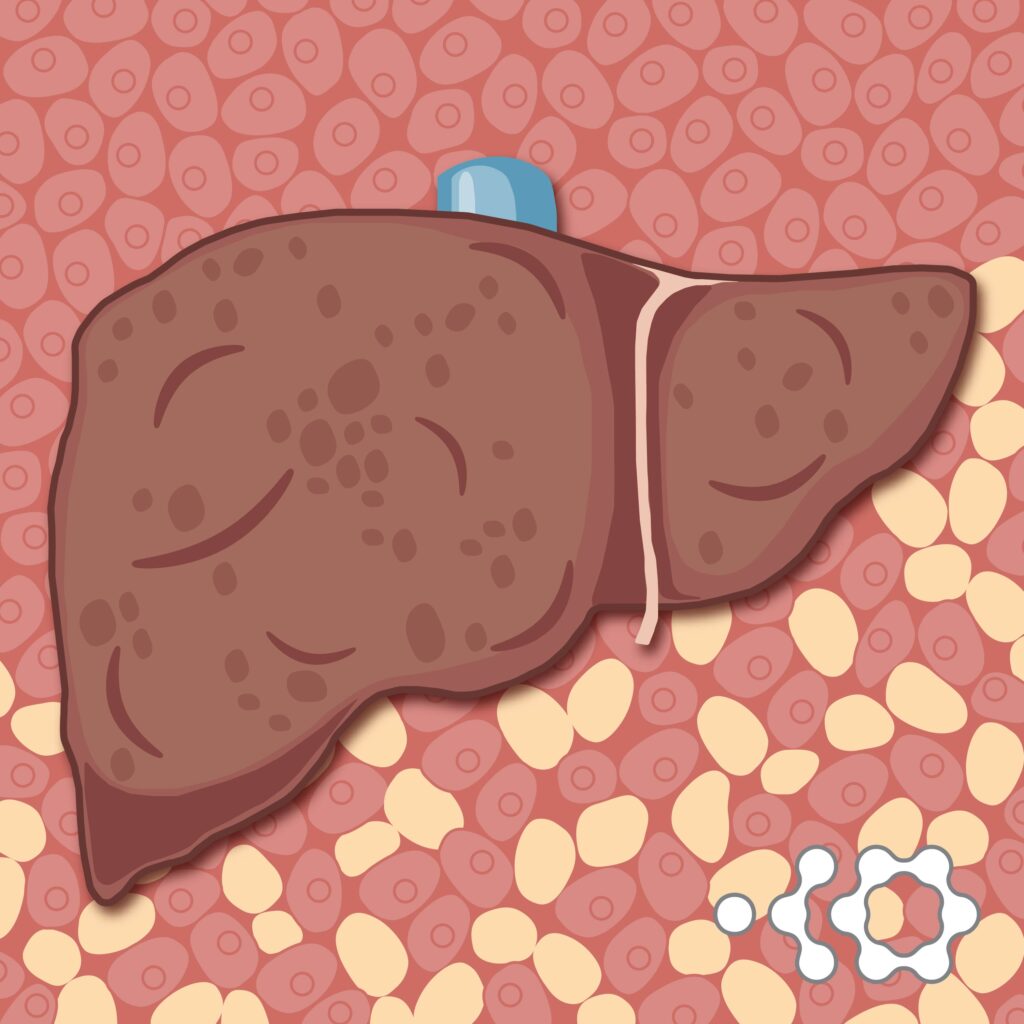FDA Convenes Experts to Address Knowledge Gaps in Noninvasive Testing for NASH
“Silent killer” is an apt description for a potentially fatal disease that progresses slowly, without any obvious symptoms in the early stages. When you couple this insidious type of pathology with a rapidly increasing prevalence, the disease is often described in terms akin to an epidemic. Nonalcoholic steatohepatitis (NASH)—a disease characterized by fat accumulation in the liver, inflammation, and fibrosis—is one such assassin, with an estimated US prevalence of 5% (~17 million Americans).1 Alarmingly, most people don’t know they have NASH: an estimated 80% of individuals with NASH remain undiagnosed.2 Liver biopsy is the historical gold standard for diagnosis; however, the procedure is invasive, and rarely performed in clinical practice. So, NASH has a testing problem.
“‘Silent killer’ is an apt description for a potentially fatal disease that progresses slowly, without any obvious symptoms in the early stages….”
There is therefore considerable interest in developing noninvasive tests for the detection of fibrosis—including the precise staging of increasing severities of fibrosis and cirrhosis. These candidate noninvasive measures encompass a range of both blood tests—which measure circulating biomarkers—and imaging techniques.
The FDA’s timely workshop—“Use of Biomarkers for Diagnosing and Assessing Treatment Response in Noncirrhotic NASH Trials”—on September 18 and 19, 2023, was intended to engage the top academic minds in the field to discuss state-of-the-art biomarkers and noninvasive tests in the context of NASH clinical trials, as well as identifying ways to improve the accuracy and utility of liver biopsy. The focus was on noncirrhotic NASH patients with advanced liver fibrosis, with an additional discussion theme related to identifying “progression to cirrhosis” using biomarkers.
Asymptomatic Early Course Followed by Progressive Deterioration
NASH is characterized by fat accumulation in the liver, leading to inflammation and liver cell damage. It progresses from nonalcoholic fatty liver disease (NAFLD) and worsens on a spectrum of deterioration starting with early-stage NASH, followed by NASH with liver fibrosis, and finally NASH with cirrhosis. Early-stage cirrhosis (compensated cirrhosis) can often be managed more effectively than late-stage cirrhosis (decompensated cirrhosis)—wherein complications are more severe and frequent, and can include liver failure, portal hypertension, variceal bleeding, ascites, hepatic encephalopathy, and an increased risk of hepatocellular carcinoma.
“NASH is characterized by fat accumulation in the liver, leading to inflammation and
liver cell damage.”
Need for NASH Biomarkers to Screen, Diagnose, Assess Prognosis, and Monitor
There is an unmet need for validated noninvasive biomarkers of NASH that encompass multiple utilities along the relatively long disease course: screening, diagnosis, and disease management phases.
“There is an unmet need for validated noninvasive biomarkers of NASH that encompass multiple utilities along the relatively long disease course: screening, diagnosis, and disease management phases.”
Liver biopsy, the historical gold standard for diagnosing NASH, is invasive, carries procedural risks, and is prone to sampling variability. Moreover, biopsy fails to capture dynamic disease progression over time, an aspect crucial for ongoing management and understanding of the multifaceted nature of NASH.
The asymptomatic pathology of NASH in the early stages also compromises patient recruitment into clinical trials, leading to challenges in identifying and enrolling a population that is representative of the disease—potential participants may be unaware of their condition, and thus less likely to seek or be referred for trial participation.
“The asymptomatic pathology of NASH in the early stages also compromises patient recruitment into clinical trials…”
Therefore, testing for NASH requires advances that facilitate (1) Screening (identify individuals at risk of developing a disease before symptoms appear), (2) Diagnosis (confirm or rule out the presence of the disease), (3) Prognosis (predict the disease’s progression), and (4) Monitoring (monitor disease progression, effectiveness of treatment, and safety).
Highlights From the FDA NASH Biomarker Workshop
The workshop aided the FDA in pinpointing knowledge gaps in utilizing noninvasive tests as diagnostic biomarkers and reasonably likely surrogates. It also offered a structure for gathering additional data to address these gaps. The FDA aimed to determine whether existing noninvasive tests meet the Agency’s standards for providing primary evidence of clinical efficacy.
Surrogate Endpoint Development and the Utility of Biomarkers
Measuring clinical outcomes as “endpoints” in a clinical trial is the most reliable way of evaluating the efficacy and safety of a new drug. Surrogate endpoints are measures of disease activity that are known to predict clinical outcomes. In NASH, clinical outcomes of interest include progression to liver cirrhosis, liver failure, or death. Surrogate endpoints are particularly useful for diseases that require long-term studies to observe clinical outcomes, as they can provide earlier indications of treatment efficacy. Biotech companies are increasingly using surrogate endpoints—biomarkers, imaging, physical signs, or other measures—of clinical benefit as primary efficacy endpoints for the approval of new drugs. The FDA has compiled a list of surrogate endpoints that have been used as the basis for drug approval or licensure.
“Biotech companies are increasingly using surrogate endpoints—biomarkers, imaging, physical signs, or other measures—of clinical benefit as primary efficacy endpoints for the approval of new drugs.”
The workshop concluded that surrogate endpoints must be carefully selected and validated to ensure they are on the causal pathway of NASH and are sensitive enough to detect changes in the disease state. The FDA is particularly interested in understanding the context of use for these surrogate endpoints in NASH. This involves a thorough evaluation of the endpoint’s predictive validity, reliability, and clinical relevance.
“…surrogate endpoints must be carefully selected and validated to ensure they are on the causal pathway of NASH…”
The agency’s ongoing dialogue with stakeholders in the NASH field aims to refine the use of surrogate endpoints, aligning them with regulatory standards and ensuring they meet the criteria for drug approval.
Fibrosis in NASH Is Complex and Dynamic
The progression of fibrosis in NASH is nonlinear, presenting difficulties in its evaluation. Certain stages may persist for varying durations, and there is also an observable fluctuation in NASH intensity over time—the workshop emphasized the need for an expanded scoring system to capture these nuances. A number of laboratory tests and imaging modalities have been developed to assess various features of liver fibrosis, and they are being used in clinical trials—and to a limited extent—in clinical practice.
“The progression of fibrosis in NASH is nonlinear, presenting difficulties in its evaluation.”
Imaging Biomarkers Are Showing Promise, Circulating Biomarkers Are a Work-In-Progress
Measuring liver stiffness by vibration-controlled transient elastography (VCTE) and magnetic resonance elastography (MRE) are showing promise for assessing liver fibrosis. Regulatory agencies are in the process of qualifying these diagnostic enrichment tools. There is thus a need for prospective, longitudinal studies to validate these methods further.
In terms of circulating biomarkers: (1) FIB-4 (Fibrosis-4), a noninvasive scoring system based on age, liver enzymes, and platelet count (used to estimate the level of scarring in the liver) and (2) ELF (enhanced liver fibrosis), a test that measures certain biomarkers in the blood to assess liver fibrosis, garnered some consensus at the workshop as tests that are valuable in the early detection and monitoring of NASH.
Drug Approvals Will Enrich Large-Scale NASH Biomarker Projects
Looking toward the future, significant advancements in the development of noninvasive biomarkers for NASH are emerging, driven by large-scale biomarker initiatives and the expected approval of new drugs. At the forefront of these developments are the “Non-Invasive Biomarkers of Metabolic Liver Disease” (NIMBLE) consortium in the US and the Europe-based “Liver Investigation: Testing Marker Utility in Steatohepatitis” (LITMUS) project. Both NIMBLE and LITMUS are dedicated to identifying and validating biomarkers for NASH.
Artificial Intelligence in Liver Biopsy Interpretation
Although liver biopsy has its limitations in clinical practice, it persists as a gold standard in clinical trials. To increase the accuracy and reliability of interpreting liver biopsy, artificial intelligence (AI) and machine learning (ML) tools are emerging. Although these tools offer the potential to analyze tissue samples with high precision and consistency, there are still hurdles to overcome.
“To increase the accuracy and reliability of interpreting liver biopsy, artificial intelligence (AI) and machine learning (ML) tools are emerging.”
One such hurdle is establishing what is called a “ground truth” for these AI algorithms: the absolute, verified reality against which the performance of these AI tools can be measured. Think of it like an answer key at the back of a textbook; just as students’ answers are compared against this key to check for correctness, AI predictions are compared against the ground truth to assess their accuracy.
In the context of liver tissue samples, this ground truth would typically come from expert pathologists who provide definitive diagnoses and analyses. By establishing a reliable ground truth, researchers aim to train AI and ML tools more effectively, ensuring they can replicate and, ideally, enhance the diagnostic accuracy of human experts.
The FDA has demonstrated that it is increasingly open to surrogate endpoint development and noninvasive testing in the field of NASH. The expected approval of drugs such as resmetirom by Madrigal Pharmaceuticals—poised to be the first targeted therapy approved specifically for NASH with fibrosis—will answer a significant unmet need in the clinic. Resmetirom holds the potential to significantly alter the disease course of NASH, particularly with a toolkit of noninvasive tests that accurately identify patients for treatment. In addition, data from long-term outcomes trials for resmetirom—and ultimately postapproval data from the clinic—will provide a rich source of information on noninvasive biomarkers, enriching projects such as NIMBLE and LITMUS.
References
- Younossi ZM, Golabi P, Paik JM, Henry A, Van Dongen C, Henry L. The global epidemiology of nonalcoholic fatty liver disease (NAFLD) and nonalcoholic steatohepatitis (NASH): a systematic review. Hepatology 2023;77(4):1335-1347. DOI: 10.1097/HEP.0000000000000004.
- Alexander M, Loomis AK, Fairburn-Beech J, et al. Real-world data reveal a diagnostic gap in non-alcoholic fatty liver disease. BMC Med 2018;16(1):130. DOI: 10.1186/s12916-018-1103-x.

Muzamil Saleem, PhD
Associate Scientific Director
Muz is passionate about helping biotech and pharma companies communicate the journey of their groundbreaking medicine from lab bench to patient. He combines a wide array of experience from a neuroscience research career, scientific consulting, and a 3-year tenure on Wall Street researching healthcare companies into his current scientific services role at HCG ProEd Regulatory. A philosophy of positioning effective scientific communication to all types of audiences is central to Muz’s work.
Connect with Muz on LinkedIn.

